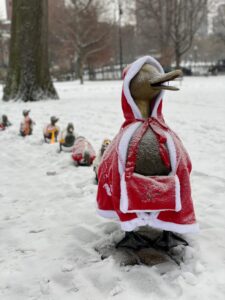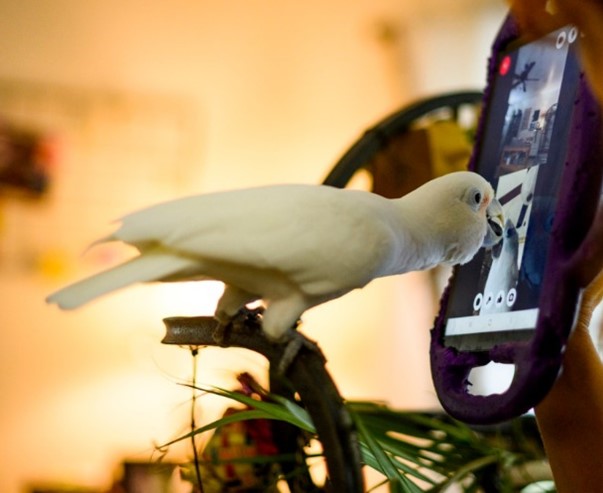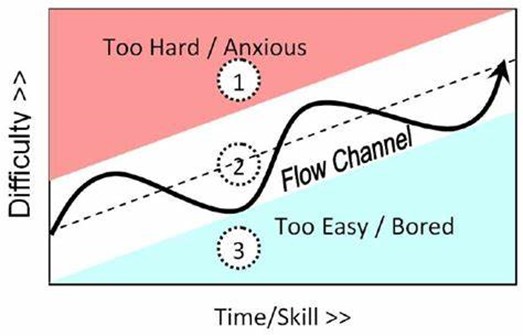Am I dreaming?
Giant clown heads wedged between 2 buildings, a unicorn imprisoned in a frosted glass case, faceless figures rappelling from various buildings, a singing whale. Am I dreaming? Is this a nightmare?
If you’ve recently strolled through Boston’s Downtown Crossing neighborhood, you might find yourself doing a double-take, caught off-guard by the unexpected and possibly disconcerting sights that make up the new public art installation titled “WINTERACTIVE, a Canadian Art Experience.” Organized by the Downtown Boston Business Improvement District (BID), their goal for the installation is to bring life to the otherwise dull and dreary winter streets and ignite conversations among passers-by. Not sure they’ve succeeded in brightening our dreary January though they have certainly ignited conversations!

What is public art?
Public art comes in many forms, from planned commissioned work to spontaneous street art. Commissioned works are often initiated by city governments, private organizations, or benefactors with a vision to enhance their communities. The Statue of Liberty and the Eiffel Tower are examples of public art that can symbolize nations. Closer to home, the iconic Paul Revere statue and Make Way for Ducklings sculptures are often seen as symbols of Boston.

On the flip side, street or guerilla art emerges spontaneously, are placed anonymously and/or without permission. Stencil, graffiti and sticker art and paste-ups are all examples of unsanctioned public art. These pieces can be both delightful and divisive, often espousing political or social messages. Some view them as provocative and thought-provoking while others consider them acts of vandalism.

The lovers and the haters
Like many public art installations, “WINTERACTIVE” has received mixed reviews across media outlets, described as fantastic, bizarre, and… creepy. Of the sixteen WINTERACTIVE installations, one has already been relocated due to neighborhood complaints. It’s a reminder that public art can elicit strong emotions – positive and negative.
How does this sculpture make me feel? What is that mural trying to convey? What is the social issue being expressed? Whether commissioned or not, public art democratizes culture, literally taking art out of exclusive galleries into our streets for all to enjoy and discuss. Love it or hate it, art can inspire us to think and learn, and in some cases, inspire citizens to engage in a deeper way.
Public art for a cause
This past summer, the CowParade New England celebrated 75 years of progress and impact made possible by the Jimmy Fund community. Designed by a range of local artists, 75 life size cows were strategically placed throughout Greater Boston, raising awareness for Dana-Farber’s work and the Jimmy Fund community. The 2023 cow collection, sold for over $1 million, demonstrating the potential of public art to make a tangible impact. (It was a fun personal scavenger hunt for myself seeking out the herd. Check out my interview by Lukas Harnisch-Weidauer here)

Get out and explore!
The next time you are out and about, look up! Look around! What art will you find around you? Whether officially commissioned or not, use finding art as an opportunity to engage, discuss, and see the world through a different lens.
So, am I dreaming? What do you think? Let’s grab a coffee at Café Nero and chat!





